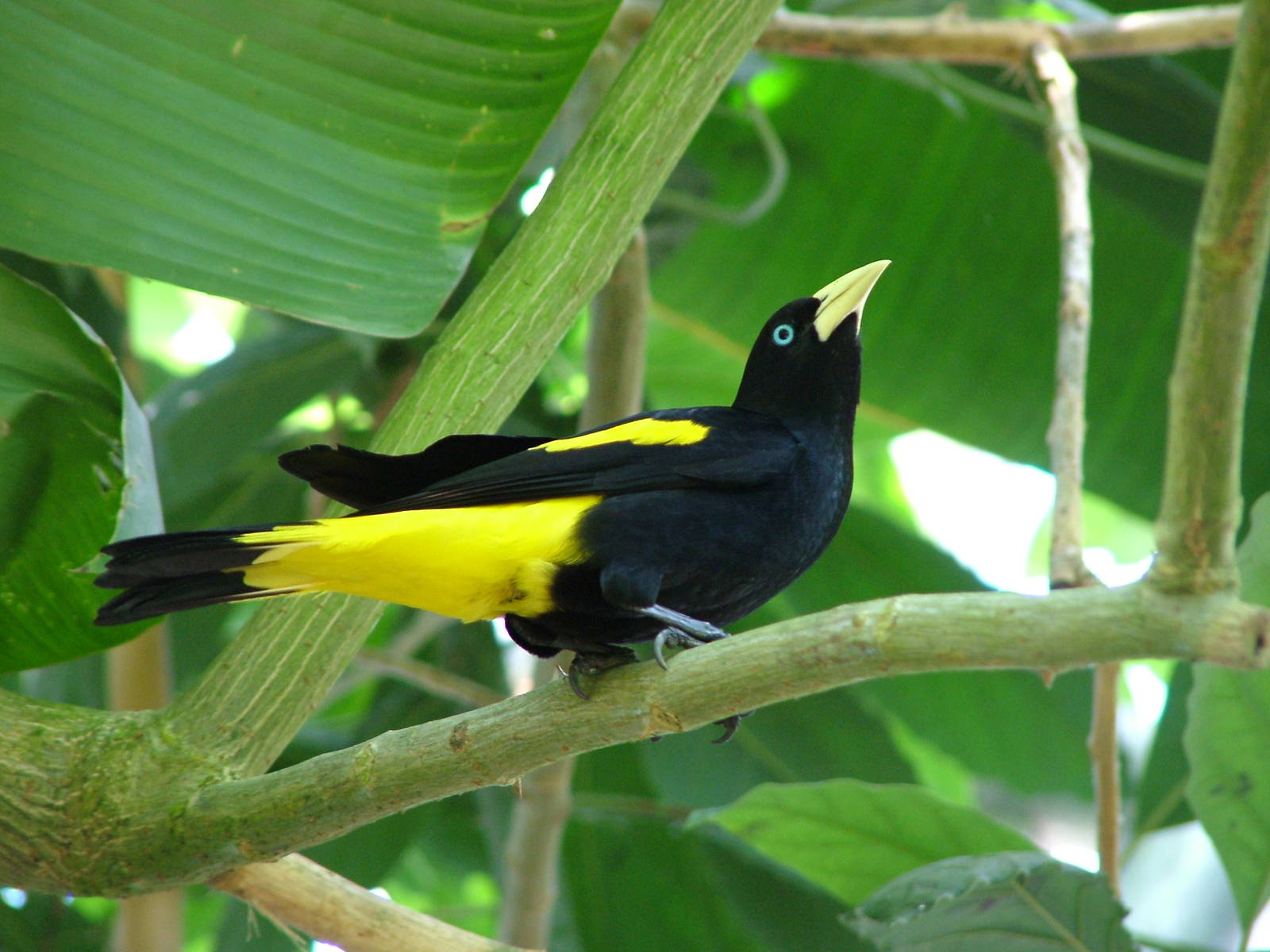
Cacicus cela
TAXONOMY
Parus cela Linnaeus, 1758, Surinam.
OTHER COMMON NAMES
French: Cassique cul-jaune; German: Gelbbьrzelkassike; Spanish:
Charro de Rabadilla Amarilla.
PHYSICAL CHARACTERISTICS
8–11 in (22–29 cm); female 2.4–3.9 oz (67–110 g), male
2.9–4.3 oz (81–121 g). Sexes similar in color. A large black
cacique with a yellow rump, undertail coverts, and wingbar.
The bill is pale yellow.
DISTRIBUTION
Resident from southern Panama to northern and central South
America, east of the Andes south to southern Bolivia and central
and eastern Brazil, and west of the Andes in western
Ecuador and northwestern Peru.
HABITAT
Tropical lowland forest edge and river-edge forest.
BEHAVIOR
Yellow-rumped caciques often nest colonially, and at colonies
females outnumber males. Males display by roughing out their
feathers, especially the yellow rump feathers, and with their
body in a horizontal position, they flutter their wings and
thrust their head downward while vocalizing.
FEEDING ECOLOGY AND DIET
They feed in trees, primarily in the outer foliage or in the
canopy. Their food is primarily insects, but they also eat fruit.
They often feed in pairs or small groups, but males often feed
singly.
REPRODUCTIVE BIOLOGY
Successful males mate with several different females in a season.
Within both sexes, dominance hierarchies are established, with
the largest individuals at the top of the hierarchy. Dominant
males obtain the most mates, and dominant females can occupy
prime nesting sites, near wasp nests; they often nest on islands.
The nest is a hanging basket, averaging about 17 in (43 cm),
woven of palm strips, and suspended from a tree branch. Generally
two eggs are laid; eggs can be laid at any season, but most
nesting takes place in the driest times of the year. Incubation
13–14 days; fledging takes place after 24–30 days.
CONSERVATION STATUS
Not threatened. Widespread and common in suitable habitat.
SIGNIFICANCE TO HUMANS
None known.
Other popular Animals
Photo Gallery of - Yellow-rumped cacique
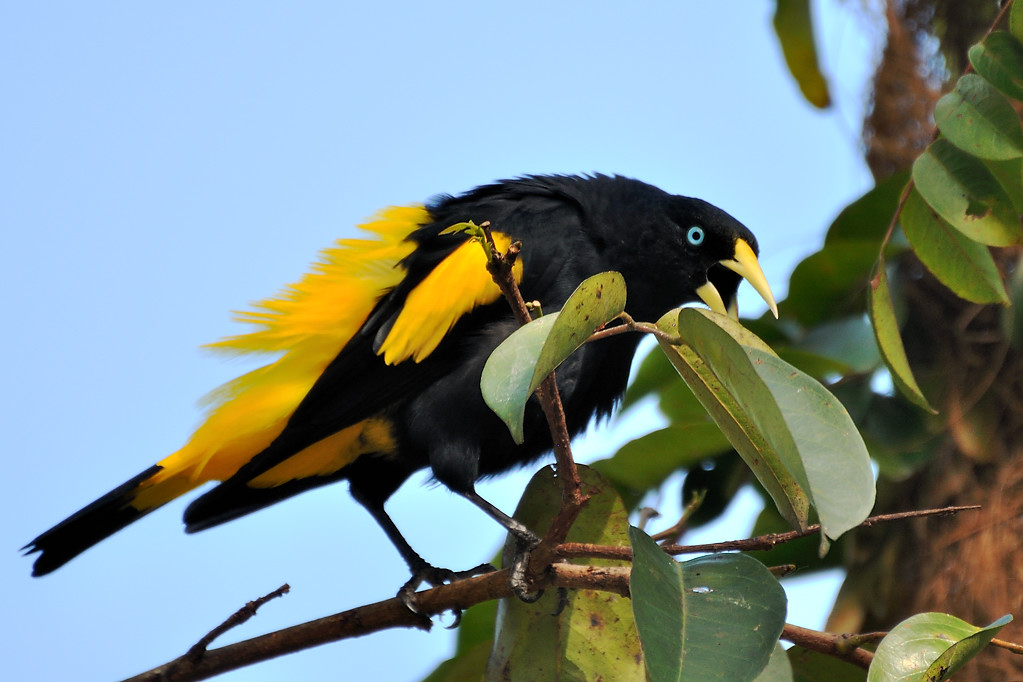
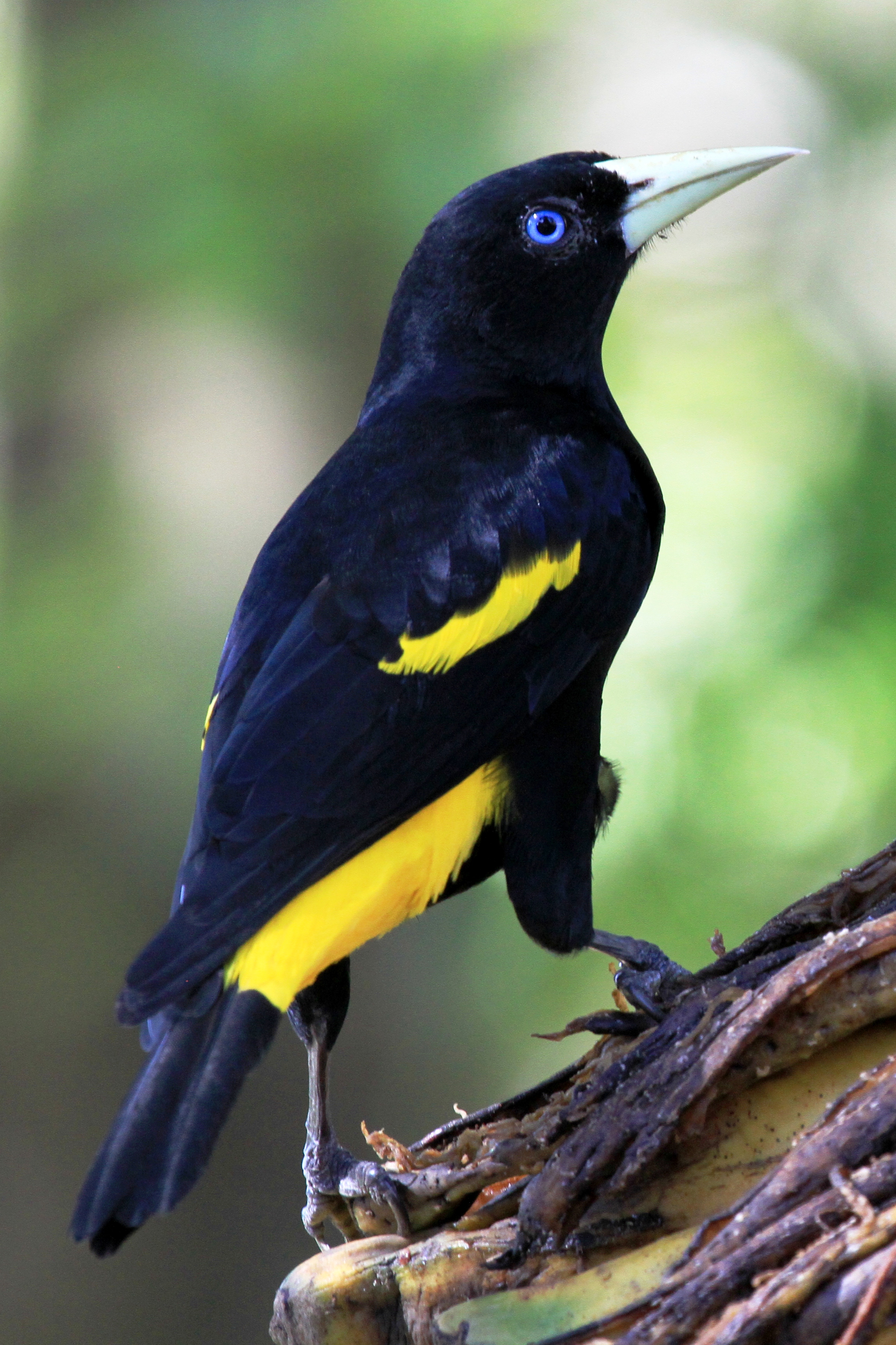
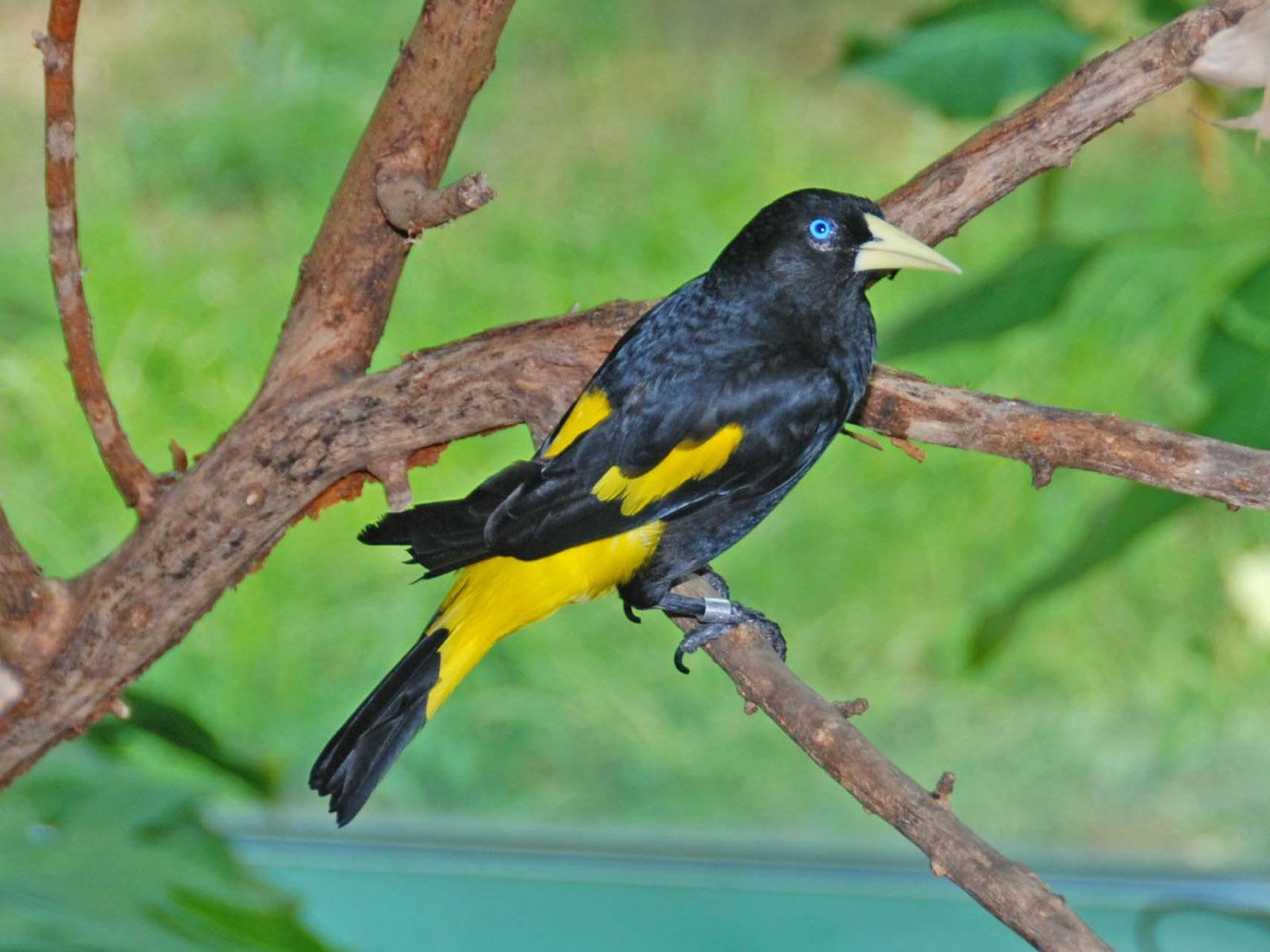
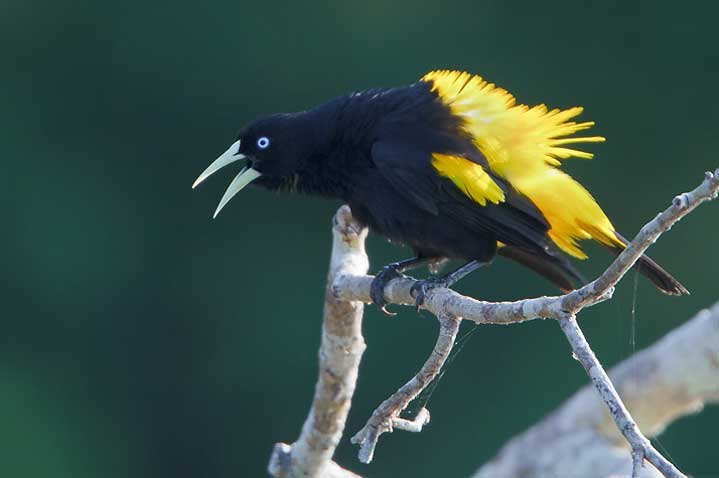
 Animalia Life
Animalia Life